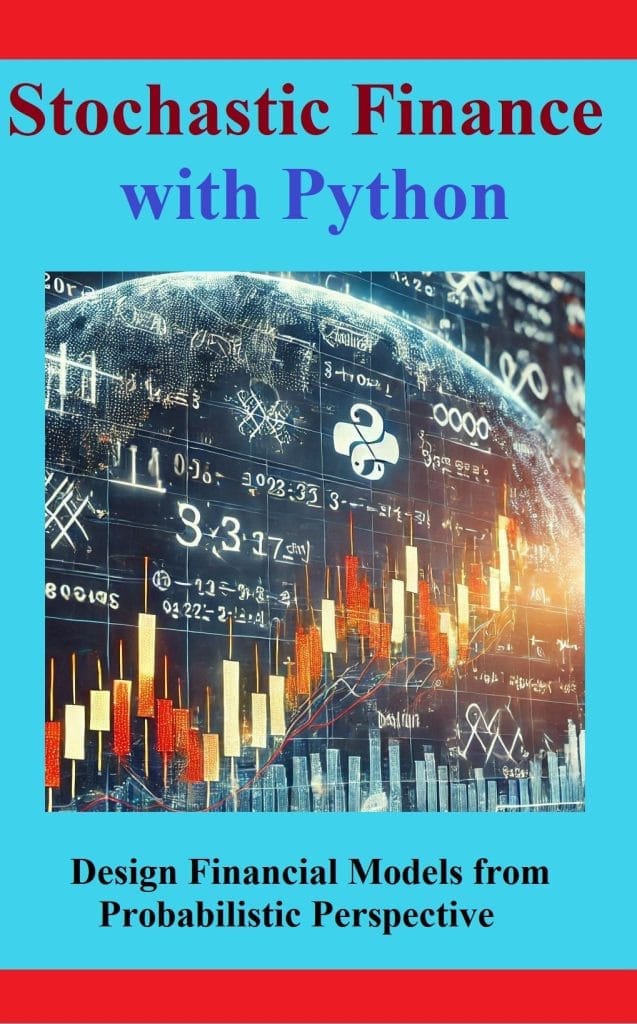In the dynamic world of financial modeling, understanding and incorporating randomness is key to accurately predicting market behavior and managing risks. Stochastic finance integrates probabilistic theory into finance to create models that simulate real-world uncertainties. Python, with its robust ecosystem of libraries and tools, enables the implementation of these models effectively.
This article provides a structured overview of stochastic finance with Python and its role in modeling financial markets, organized under key foundational pillars.
What is Stochastic Finance?
Table of Contents
ToggleStochastic finance focuses on incorporating randomness and uncertainty into financial models. Unlike deterministic models, which assume a fixed outcome, stochastic models acknowledge that financial markets are unpredictable. These models are built using stochastic processes, such as Brownian motion or Poisson processes, to describe the random evolution of variables like stock prices, interest rates, and market indices.
A classic example is the Geometric Brownian Motion (GBM) model, widely used in option pricing. GBM assumes that the log of an asset’s price follows a Brownian motion, providing a robust framework to model price dynamics under uncertainty.
Key Applications of Stochastic Models in Finance
- Option Pricing
Stochastic models form the backbone of options pricing methodologies, including the Black-Scholes-Merton model. Python libraries such as NumPy, SciPy, and QuantLib allow practitioners to simulate option prices efficiently. - Portfolio Optimization
Incorporating randomness helps simulate various scenarios for portfolio returns, enabling investors to manage risk better. - Risk Management
Value-at-Risk (VaR) and Conditional Value-at-Risk (CVaR) calculations use stochastic models to quantify potential losses. - Interest Rate Modeling
Models like the Vasicek or Cox-Ingersoll-Ross (CIR) process help forecast interest rate movements, which are crucial for bond pricing and risk management. - Monte Carlo Simulations
Monte Carlo techniques, often implemented using Python, leverage stochastic processes to evaluate complex financial instruments and strategies.
Implementing Stochastic Models in Python
1. Modeling Stock Prices with Geometric Brownian Motion
Geometric Brownian Motion (GBM) is a widely used stochastic model to describe asset price dynamics. It incorporates a drift term μ, representing the expected return, and a volatility term σ, capturing the randomness. The Wiener process (Wt) introduces stochasticity, ensuring the model reflects the unpredictable nature of markets.
GBM assumes the log of asset prices follows a normal distribution, making it ideal for modeling stock prices over time. Python facilitates efficient simulation of GBM, enabling practitioners to visualize and analyze price evolution through straightforward coding, as shown in the example below.

Download PDF: Stochastic Finance with Python – Design Financial Models from a Probabilistic Perspective
Here’s how you can simulate GBM in Python:
import numpy as np
import matplotlib.pyplot as plt
# Parameters
S0 = 100 # Initial stock price
mu = 0.05 # Drift
sigma = 0.2 # Volatility
T = 1 # Time horizon (1 year)
dt = 0.01 # Time step
N = int(T / dt) # Number of steps
t = np.linspace(0, T, N) # Time vector
# Simulating Brownian motion
W = np.random.normal(0, np.sqrt(dt), N)
W = np.cumsum(W) # Cumulative sum to generate Brownian motion
# Simulating stock price using GBM
S = S0 * np.exp((mu - 0.5 * sigma**2) * t + sigma * W)
# Plotting the simulated stock price
plt.figure(figsize=(10, 6))
plt.plot(t, S, label='Simulated Stock Price')
plt.title('Geometric Brownian Motion Simulation')
plt.xlabel('Time (Years)')
plt.ylabel('Stock Price')
plt.legend()
plt.grid()
plt.show()
2. Monte Carlo Simulation for Option Pricing
Monte Carlo simulation is a cornerstone of stochastic finance. It involves generating random price paths and evaluating the payoff of financial instruments under these scenarios.
Example: Pricing a European Call Option
Monte Carlo simulation is integral to option pricing in stochastic finance. By generating numerous random price paths for an asset, it estimates the expected payoff of options under different scenarios. The method is particularly useful for pricing European call options, where the payoff depends solely on the stock price at maturity.
The simulation applies risk-neutral valuation, discounting future payoffs to present value using the risk-free rate. Python’s computational capabilities make it seamless to execute Monte Carlo simulations, yielding accurate and efficient pricing for complex financial derivatives. The example below demonstrates its practical application.
Here’s the implementation in Python:
# Parameters
K = 105 # Strike price
r = 0.03 # Risk-free rate
M = 10000 # Number of simulations
# Monte Carlo simulation
payoffs = np.maximum(S[-1] - K, 0) # Payoff for each path
option_price = np.exp(-r * T) * np.mean(payoffs)
print(f"European Call Option Price: ${option_price:.2f}")
Advanced Stochastic Models in Finance
- Heston Model
The Heston model captures stochastic volatility, making it more realistic than GBM. Python’s QuantLib library can be used to implement this model. - Jump Diffusion Models
These models incorporate sudden, large changes in asset prices, enhancing the modeling of extreme events. Tools like SymPy and NumPy can aid in their implementation. - Machine Learning with Stochastic Models
Combining stochastic finance with machine learning can uncover patterns in historical data. Libraries like TensorFlow and PyTorch facilitate this integration.
Challenges in Stochastic Finance
While stochastic finance offers a robust framework, it comes with challenges:
- Parameter Estimation
Estimating parameters like volatility and drift from historical data can be complex and prone to errors. - Computational Intensity
Simulating stochastic processes, especially in high dimensions, requires significant computational power. - Model Calibration
Ensuring that models align with real-world data involves iterative calibration, which can be time-consuming.
Conclusion
Stochastic finance is a robust framework for understanding and modeling financial markets, embracing randomness and uncertainty. With Python as a computational partner, you can design models ranging from asset price dynamics to portfolio optimization and option pricing. By mastering the foundational concepts of probability, simulation, and stochastic processes, you unlock the ability to create sophisticated financial models tailored to real-world complexities.